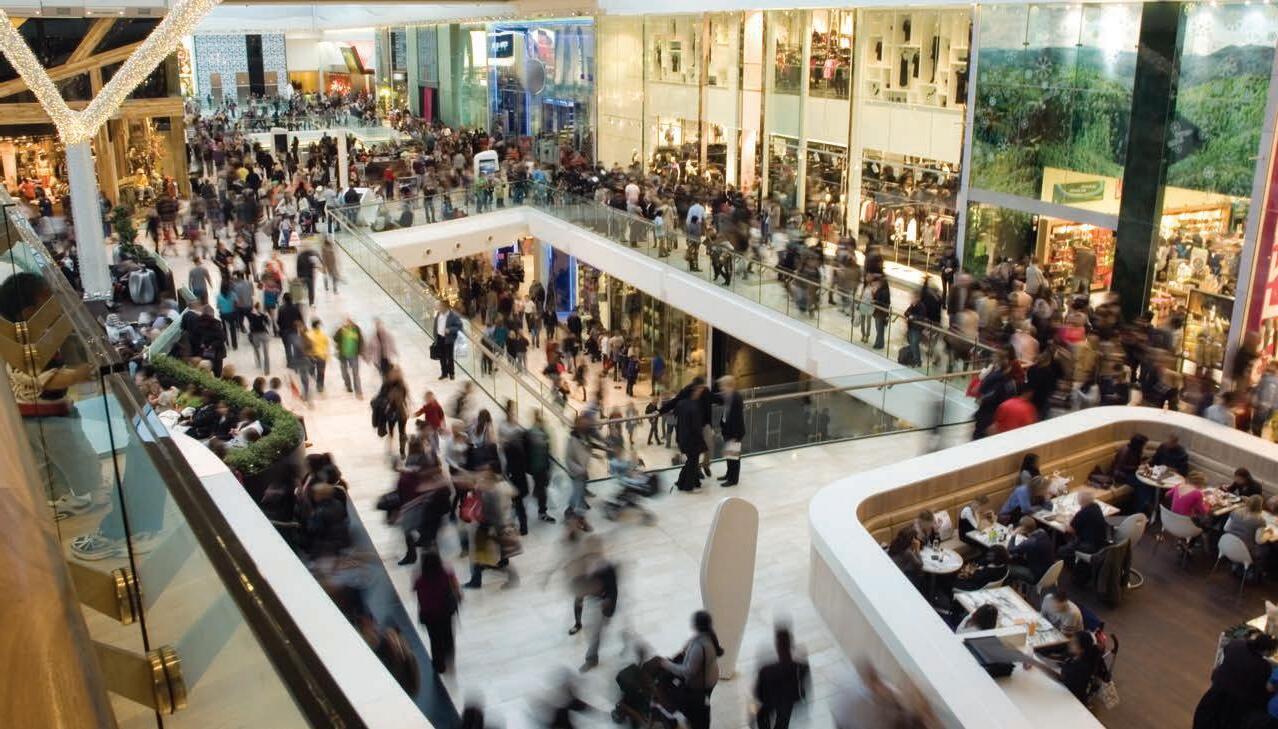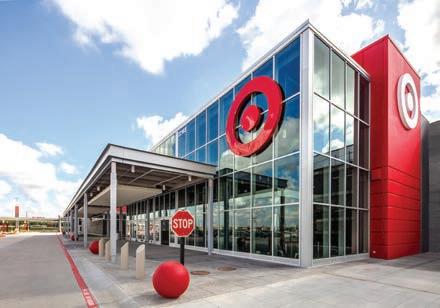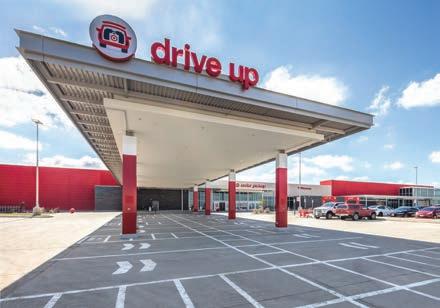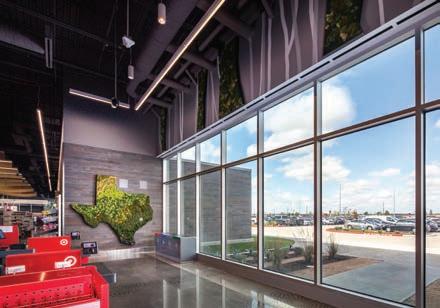
6 minute read
RESILIENCE R E T
from X Team Insights 2023
by xteamretail
Every so often, an apocalyptic headline pops up announcing the demise of retail, specifically brick-and-mortar retail. Much of this occurs in response to the latest news about a retailer’s bankruptcy, the most recent being Bed Bath & Beyond. Then there have been the “retail-is-dead” topics over the past few years. Specifically, e-commerce is killing brick-and-mortar. And more recently, questions arose about whether the pandemic meant an end to physical retail.
While the headlines create a “sky-is-falling” scenario, physical numbers explain the opposite. The National Association of Realtors reports that thanks to a lack of new supply, vacancy in the U.S. retail sector has been falling consistently in recent quarters, ending 2022 at 4.2%. Average asking rents and net absorption also increased.
Advertisement
So, what’s going on? The simple answer is that brick-and-mortar isn’t going away. Nor is retail in danger of extinction. What it is doing is changing, as it always has, to meet the needs of consumers. In other words, it’s evolving to survive shifting market conditions.
This is nothing new; simply look at how the sector has transitioned over the past several decades. What began as mostly momand-pops and corner shops morphed into department stores in downtown locations. Suburban spread then drove retailers outside of CBDs, and things took off from there.
These days, said Providence Group Partner Melissa McDonald, “retail hasn’t returned to the business districts in most mid-sized markets.” There has, however, been an increase in urban infill development. “The suburbs have continued to expand, adding more retailers that would have typically been located in more interior neighborhoods.”
Another “today” trend? Retailers are eyeing former office and industrial space for their brick-and-mortar locations. Part of this is an aesthetic move. A different look is a branding strategy, one that allows a retailer to stand out from the competition. “This is much more prevalent in markets with infill, urban locations where there are minimal options for traditional retail product,” McDonald said.
Malls Face Shrinking Attention Spans
The “mall is dead” theme is an unfortunate generalization; not all malls are going belly-up. Many are in the process of changing as they respond to consumer demand.
Whereas teens of the 1990s would hang out all weekend in malls, things are different today. The teenage mall rats of the late 20th Century have been replaced by tech-savvy youth who “have other things to do than hang around a food court,” said Tim Miller, a Principal with GreatStreet Realty. “This generation is more in and out. They don’t like to spend the day at the mall. Attention spans are shorter.”
Successful malls are evolving, as they offer convenience, ideal co-tenants, restaurants and entertainment, he said. This, in turn, leads to the need for a sense of place. As a result, newer construction (and mall renovations) is determined by demographics as well as psychographics, versus simply putting a bunch of national chain stores together and hoping for the best. Or, as Miller said: “The malls that are thriving today have resolved anchor issues and kept the interior small shops fresh.”
McDonald noted that the more unsuccessful— typically older Class B or C properties—are undergoing their own change. Many are being re-purposed into office or medical uses. Still others are being incorporated into mixed-use centers, complete with residential components. “The more viable malls that are not performing have done some redevelopment and added promotional retailers to the mix to create more a more stable tenant mix and, in turn, a more stable asset,” she added.
Big Boxes Get Smaller
The headlines also proclaim the demise of the big-box footprint; this was “news” even before the pandemic. In reality, the big-box format isn’t going away as much as it’s being re-imagined.
Of absorption in 2022 was driven by general retail and neighborhood centers
%Bryan Cornelius, Principal with RetailUnion Partners, pointed out that the larger-format space is becoming home to entertainment, especially if that big-box space is part of a larger center. “Restaurant and entertainment are becoming the anchors here, rather than department stores,” he said.
Then there are the large-format retailers that refuse to budge. They’re staying the course by offering buy-online-pickup-in-store (BOPIS) or buy-on-line-pickup-at-curbside (BOPAC) services. This isn’t necessarily new; BOPIS and BOPAC were offered before the COVID-19 pandemic. And as consumers return to inperson shopping, retailers continue offering this as a convenience. “Large retail stores have capitalized on having great real estate near rooftops by operating a retail store with more sophisticated e-commerce and BOPIS programs,” Miller said.
As such, big-box retailers are repositioning their space as both a destination to visit and as a fulfillment center for online orders. For example, Target has announced that beginning this year, it’s going even larger with its store layout, in part to allow more efficient BOPIS/BOPAC order fulfillment.



And in some situations, the big-box format does well for smaller retailers, especially with a decline in retail construction. “With the lack of vacancy, there are multiple users for each box,” Providence Group’s McDonald commented. “Some of the boxes in excess of 100,000 square feet are being subdivided, given that most box users are in the 22,000to 55,000-square-foot range now.”
TECH TOOLS ADD TO RETAIL’S RESOURCES
Despite all the predictions to the contrary, most consumer sales transactions are taking place in person. According to the U.S. Census Bureau, e-commerce sales in 2022 accounted for 14.6% of total retail sales, but that figure has remained flat since the prior year.
Supporting this finding is a Bain & Company survey among shoppers, which reported that people of all age groups like setting foot, and shopping in, physical stores. Notably, this was the case with tech-savvy Millennials and Gen Z. The survey indicated that young adults accounted for 38% of all retail spending during the latter part of 2022 and early 2023.
If anything, retailers are recognizing that technology can boost their sales and help with other areas. Target, for instance, relies heavily on tech to further its business decisions. Before launching its newer, larger stores, the retailer built and tested the model using virtual reality. Target’s store design team created a fully virtual, life-size representation of the re-imagined store, allowing them to analyze and redesign features in real time while virtually “walking” the store to ensure the enhancements would work for both customers and team members.
Before the age of predictive analytics, choosing where to place a store involved extensive field analysis based on complementary or competitive retailers. Today, more sophisticated market approaches synthesizing data on lifestyle segmentation, visitor analytics and consumer psychographics help retailers better pinpoint locations that will best serve their target markets. The result is an increase in both sales dollars and foot traffic.
Furthermore, retail is undergoing an integration between e-commerce and brickand-mortar. Most brands these days require a digital presence to survive since the majority of shopping trips start with a visit to a search engine. Without a digital presence, retailers also won’t show up in internet searches.
But the integration of retail and tech isn’t new; it’s just taken a few steps forward. GreatStreet
4.2% 6.7% 75.8MSF 4%
YOY RENT GROWTH YOY NET ABSORPTION
YEAR-END VACANCY YEAR-END CAP RATE
Realty’s Miller said that e-commerce changed the perspective of retailers, while the pandemic forced innovation in the field. “One of the best improvements is the ability to go online to see if something is in stock at a store, click it, buy it, and pick it up,” he observed. “To me, that is the most effective strategy that has emerged in the past five years.”
THREAT IS DOWN, BUT COVID’S IMPACT REMAINS
The pandemic impacted retail immensely. Shorter store hours, partly due to labor shortages, are one lasting result. Restaurants beefed up their mobile and online ordering processes, while focusing more resources on drive-thru and take-out options versus on-site dining. Those restaurants in warmer climates expanded their outdoor seating areas.
In fact, more attention is being paid to the outside of brick-and-mortar properties, in general. “People want to be outdoors more, even with the pandemic in the rear-view mirror,” said Cornelius with RetailUnion. “This has led to more outside facilities and attractive landscaping, as well as more open pedestrian areas.”
Another trend involves the blending of products and services to improve branding, stand out from the competition and lure consumers back to the stores. Swedish meatballs at Ikea have always been a thing. But these days, home furnishing stores and apparel stores are adding food and drink areas “to bring customers in, enhance the overall experience and take less ‘Main and Main’ locations in absence of that space being available,” McDonald said.
Interestingly, consumer preference has also shifted toward smaller retailers and shopping closer to home. You can thank the pandemic for that one, Miller said. “When everything was forced to close, customers realized that supporting bricks-and-mortar in all categories was vital to their community,” he concluded.
Source: National Association of Realtors’ 2023 CRE Insights Report
Indeed, today’s consumers still like the experience of in-person shopping—it’s just that now, they also want to be engaged enough so the experience is worth the effort. X
After thoroughly testing it in virtual reality, Target launched a new larger-format store concept earlier this year. The bigger facilities feature more merchandising options and expanded backrooms with updated fulfillment areas that will also support the retailer’s growing same-day services and stores-ashubs strategy. The new format also includes natural design elements, open layouts, sustainable features and comfortable, flexible team spaces.










